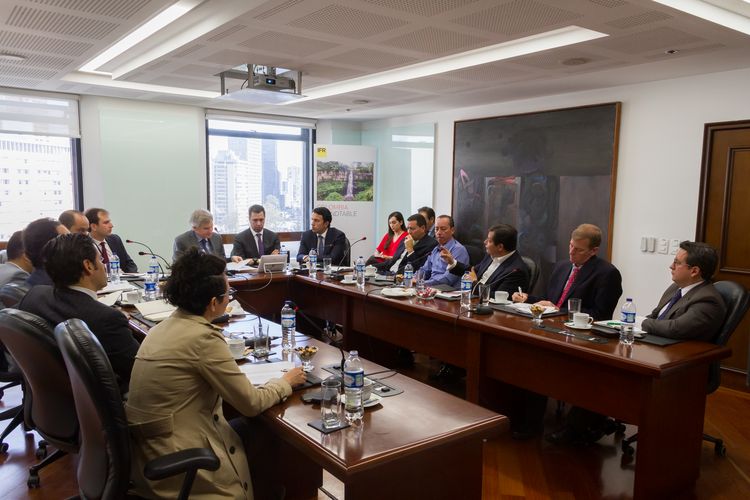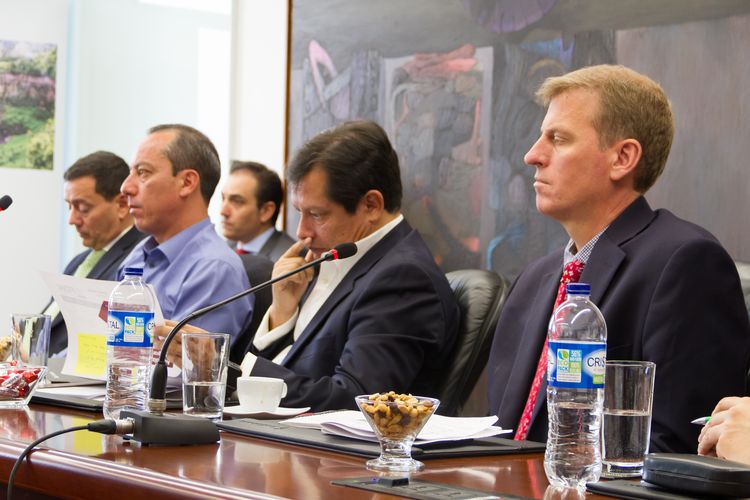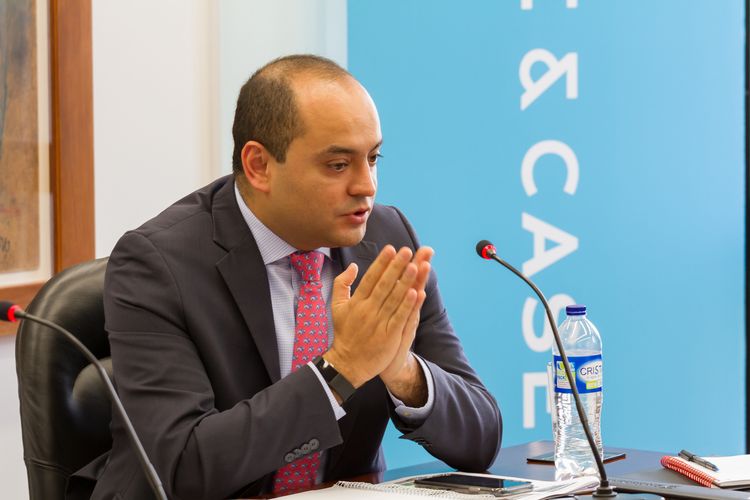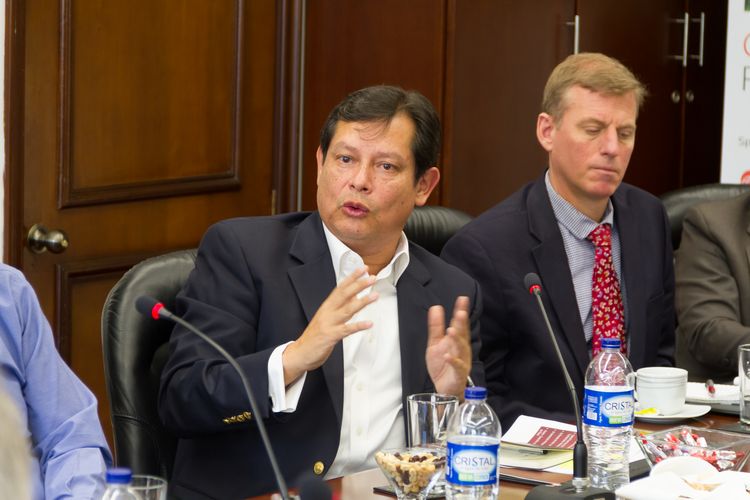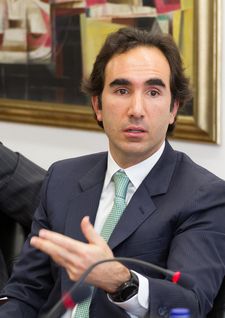IFR: The Colombian president has said that the influx of Venezuelan immigrants has cost the country 0.5% of GDP. What impact will a resolution to the Venezuelan crisis have on the budget and more broadly on the Colombian economy?
César Arias, Colombia’s Ministry of Finance: We are happy to report that in 2018, which was the peak year of the problem, when we had a net influx of one million, and immigrants put a lot of pressure on fiscal accounts via housing, health, education; we were able to accommodate these needs within the fiscal rule. We didn’t ask anybody for a relaxation of our fiscal targets. This was included in the 3.1% of GDP, which we achieved in 2018.
And that was the reason we put this issue up for public debate. We estimated that if we see a repeat of 2018, this could cost up to 1.5% of GDP. This is at a time when we have said we would lower our deficit from 3.1% to 2.4%. So this is a tall order and the country deserves to think about this issue.
At the same time we don’t want to contaminate our fiscal planning by incorporating the whole Venezuela effect into our fiscal accounts. Why? Because if you were to ask me two months ago, I would have told you that our neighbouring country is going to have this problem for a while; not months but years.
But if you ask me now - and within the government we are changing a little bit our thinking – I would say maybe it could be an issue of months rather than years. And if that happens, we are starting to think and run the numbers, and the fiscal impact of Venezuelan immigration will probably be fiscally neutral, and if you are very optimistic over the medium term, actually fiscally slightly positive.
I point to the experience of the Haiti earthquake when the country was destroyed and all the help and assistance had to go through the Dominican Republic. If you look at the growth of Dominican Republic at that time, you had an uptick. It is more difficult to calculate how much of that growth is materialised in fiscal income, but I would expect it to be at least neutral if not positive.
You are already seeing it today. This big inflow of humanitarian assistance is coming through Colombia. You see the tankers and the trucks. But we have to be ready. We haven’t forecasted or incorporated the fiscal impact above the line in the budget. But I am already starting to ask for financing with a Venezuelan twist.
For this year, external bonds are as important as multilateral financing. We are raising US$2bn from each source. Two of the loans – the US$750m from the World Bank and the US$600m from CAF – have been awarded because we have met initiatives of having an open-arms policy toward immigration. And we have been able to access concessional financing, meaning discounts in the rates, and have upsized the magnitude of the loans.
What I am trying to say is that although we don’t want to materialise the full effect of the Venezuela crisis – because it is uncertain – in the above-the-line fiscal accounts we are getting ready by bringing financing that will be able to attend to this problem if it happens.
It is difficult to add a Venezuelan component in a bond, although it is possible as a social responsibility or something, but it is easier to do it (with multilateral financing). The fact is that they are recognising our approach to immigration in this government as innovative compared to other jurisdictions.
IFR: So you are the Dominican Republic of this situation and will benefit from the flow of funds in the event the Venezuela crisis is resolved?
César Arias, Colombia’s Ministry of Finance: When the transition happens in the neigbouring country I think the DR example will be dwarfed, because of the amount of money (required for Venezuela).
IFR: Let’s move on to the state of play in the infrastructure space following the corruption scandals centering on Brazilian construction firm Odebrecht. Clemente, where do you stand now with the country’s 4G infrastructure programme? How have sponsors raised financing in this difficult environment and what sort of funding is on the cards?
Clemente del Valle, FDN: For us the priority is closing this first package of infrastructure projects. It is probably the most ambitious PPP toll road programme in emerging markets, excluding China and India.
I am operating around 28 projects for close to US$15bn. That is our target. We closed the first 14 for about US$7bn. From our perspective, we are extremely satisfied with the results. People think this isn’t a lot – US$7bn in toll roads – but for Colombia this is huge.
We were able to diversify the funding. When we started three and a half years ago the perception was that this was going to be financed primarily through local banks, because they were primarily local currency projects. But we knew we could not rely on a market with so few banks, and a project as big as this could not rely on just one source. It would have been suicidal. So FDN was created to mobilise funding from more sources.
In the first year, local banks represented close to 47% of the funding, and they more or less ended at around 37% by end of last year. We hope the local banks will represent about 35% and we want them to stay that way. But that will be a challenge as well. In 2016, they were major participants and then the Odebrecht situation came and that affected primarily the local banks.
In the meantime, we started on various fronts to look for new sources. First it was the capital markets, which for many was a bit surprising as usually that comes at the refinancing phase. Relying on some capital markets participation from day one was quite challenging. But we were able to issue five bonds.
We designed a project that was tailor-made for this 4G. Although they have very good enhancements from the government in terms of how traffic and construction risks are mitigated, all those mitigation mechanisms take time. The government gives itself enough time to pay them.
Because liquidity was perceived as one of the main risks, we developed a product with a liquidity risk enhancement mechanism. That allowed us to get investment grade and that is how the bonds were issued.
The other important source has been the debt funds. It was local currency. We needed local currency because of the way the products are designed. We were able to promote the creation of three debt funds. More or less US$1.5bn was committed to those three debt funds, and they have played a critical role in 2016-2018 and will play a very important role in 2019.
IFR: Are these are funds set up to invest in infrastructure?
Clemente del Valle, FDN: They were dedicated instruments for infrastructure and PPP. And the only thing that was available of this size was 4G, so basically that is where they committed most of the money. That was the second instrument being promoted. We were an anchor investor at the beginning. More than the amount of money, we were the godfather of the project. We supported the change in regulation and then we supported the investment.
FDN initially had a smaller participation, about 8%-9% of the projects, and then we got money from government’s sale of ISAGEN, which fortunately came at the right time. This was 2017 when local banks said they were not interested, not because they didn’t like the projects, but because of the previous Ruta del Sol 2 highway project (a contract won by Odebrecht).
Local banks were very exposed and they were very affected. I have to say the government took too long to resolve the issues, but they are resolving them now. It shook the confidence of the local banks. There was the issue of the regulation. Because local banks were the ones affected, they wanted to make sure the legal framework was very clear.
In some ways 4G was bullet-proof from corruption. Why? Because it really put an emphasis on the way the projects were awarded so we haven’t had the scandal around the 4G projects. It was very transparent and very open. And they really did a great job in that process. That is why most people were not concerned that these projects would face the same situation as Ruta del Sol 2.
IFR: I understand that the banks have been paid back for the Ruta del Sol project. Is that right?
Clemente del Valle, FDN: Part of it. But they still have a significant part remaining and that will be paid once the liquidation of the project happens. Hopefully they will recover most of their losses.
IFR: How about international banks?
Clemente del Valle, FDN: The last funding source, which is very important, was the international banks. They had never participated in Colombian toll road projects, which lacked project finance standards and were in local pesos.
We promoted project finance standards, and international banks started to come in, first using future dollar flows. We had credit enhancements provided by FDN, and dollar hedges provided by the ministry of finance. That way we were able to bring in international banks at the beginning.
This has allowed us to have an interesting funding mix. We have institutional investors and bond capital markets representing about 25% between the two. International banks have about 17% but I believe they are going to come to 25%. FDN will be around 18%-20%, and local banks will remain around 30%-35%, which for me is good.
IFR: What else are you doing to bring in international banks?
Clemente del Valle, FDN: The other interesting thing for international banks are mini-perms. That is a new structure for Colombia. With mini-perms you can do shorter maturity loans that could be hedged. There is refinancing risk, which is shared between the sponsors and the banks, but we are giving enough room, nearly two years, for refinancing. We believe that mitigates substantially the refinancing risks.
US banks were not participating because of longer maturities, but mini-perms allow for that possibility, so hopefully this year we will have two of these structures.
Through this process we have been able to diversify our funding sources. Imagine in 2017 when the local banks said they were not going to participate. If we had only relied on them the projects would have been completely dead and the government would have been up against the wall. I understand the local banks’ situation, but as a government institution we had to think about the nation.
Jabar Singh, Scotiabank Colombia: We congratulate FDN for considering the mini-perm structure. Our bank has a lot of capital deployed in infrastructure and the Pacific Alliance in general and we think there is capital for the execution phase of the project and there is capital for the operational phase, which is pension fund capital that has longer-term horizons and expectations.
Not to commit ourselves to anything but we will be open to looking at infrastructure again as a consequence of that decision.
IFR: Will we see more capital market issuance for infrastructure financing?
Clemente del Valle, FDN: Capital markets will continue to grow in importance. The challenge in the next two or three years will be the refinancing of these big loan portfolios concentrated in these projects. We need to recycle capacity in the banks and the only way to do that is in the capital markets. Bond investors need local long-term instruments but they don’t have a lot of capacity for risk assessment for projects, and that is why they have been so cautious.
But while these refinancings will involve operational risk, they will not have construction risks, so this will be a good asset for capital market investors. We are creating a securitisation company for infrastructure bonds and have even got a soft rating for a bond with enhancements. We could easily get the Triple As that the pension funds (need), especially in the operational phase (of the project).
We feel there is enough room to refinance loans and get the banks in shape to consider doing new projects.
John Guzman, White & Case: We are pretty confident that we will see more and more of these projects come through on the refinancing side so there will be opportunities in the capital markets.
The mini-perm structure is interesting because that is really going to open the floor for other banks to come. That is a positive.
IFR: What are the sizes of the refinancings over the next few years and how much more do you have to raise for future projects?
Clemente del Valle, FDN: We still need to raise another US$8bn if everything works with those 28 projects. Unfortunately, of the remaining projects we have at least four or five that have been affected by reputational issues. We don’t know if those projects can be closed. This is primarily the responsibility of the ministry of transport. They are trying to find a way to see if sponsors can sell it within the timeframe of the contracts. They are good projects, but the problem is that some sponsors are contaminated and therefore banks won’t touch them so it is very difficult. Unless we can resolve this issue, and those sponsors exit, those projects may have to be liquidated and (rebid), and that will probably take another two years.
This year we plan to do between seven and eight projects. That will be around US$3bn-$3.5bn. We are confident about the financing for those. We will already have two-thirds of the programme funded, and that will keep the construction going, which in turn will have the economic impact that the country needs and the government wants.
IFR: Andrés, as a local asset manager do you invest in these infrastructure projects? What’s your take on the reputational risks?
Andrés Lozano, Colfondos: We have been very active since the beginning of the 4G projects. We feel comfortable with the risks and the way the projects are structured. We have been active in the bond issues and the debt funds.
Right now we are more in a wait-and-see mode. There has been a delay in the deployment of capital because of the local financial industry, which has been basically aware of the problems that happened with Odebrecht. So we are waiting for that first wave of commitments in the debt funds to be deployed. But we like the way the 4G contracts were structured.
Clemente del Valle, FDN: A lot of the delays were not caused by the financing, but by problems in the projects or the sponsors. And there was a change in management at Agencia Nacional de Infraestructura (ANI) that also slowed things and projects were awarded with a lot of open issues regarding communities.
In the developed world you never award projects before you have those issues resolved. But here there was a need to go faster as the government had spent five years putting the framework in place so they needed to show results. Political cycles have one speed and projects another, and they tried to force it too much.
This new government has understood this and is really focused on solving the problems with the projects and sponsors. You have to give proper attention to the problems. It was not so much the financing, but the projects were not ready, and the banks couldn’t provide the funding until the project was ready.
To see the digital version of this roundtable, please click here
To purchase printed copies or a PDF of this report, please email gloria.balbastro@refinitiv.com
